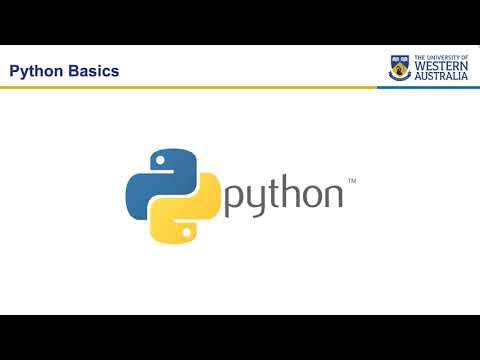Intro to kdb+ and q | Tutorial #2 | Q Console, Types and Lists
Summary
TLDRThis video introduces the Q programming language, highlighting its interpreted nature, dynamic typing, and support for various data types, including numeric values and functions. The speaker demonstrates how Q evaluates code instantly in the console, showcasing operations on integers and lists. Unlike many programming languages, Q simplifies vector operations, allowing users to perform calculations on entire lists without explicit loops. The tutorial emphasizes the efficiency of Q's arithmetic capabilities, making it an appealing choice for mathematical and functional programming.
Takeaways
- 😀 An interpreted programming language evaluates code immediately upon entry, providing instant feedback in the console.
- 🤖 Q is dynamically typed, meaning variables can change types based on the values they hold at any given time.
- 🔢 Q supports various numeric types, including integers (16-bit, 32-bit, 64-bit) and floating-point numbers.
- 📅 Dates in Q have their own type, distinguishing them from standard numeric values.
- ➕ Q allows vector operations, enabling users to perform arithmetic on lists of numbers without writing loops.
- ⚖️ The division operator in Q is represented by '%', which always returns a floating-point result.
- 🔤 Q provides a trailing type indicator for numeric values, helping to clarify the type of the output.
- 💻 In Q, functions are treated as data, allowing for more flexible programming patterns.
- 📊 Lists of uniform numeric types are denoted by spaces, allowing easy creation and manipulation of data collections.
- 🔄 Q simplifies common operations, such as adding two lists together, using straightforward syntax.
Q & A
What does it mean for Q to be an interpreted programming language?
-An interpreted programming language, like Q, evaluates code immediately upon entry. This means when you input a line of code in the Q console and hit enter, the interpreter evaluates it and returns the result right away.
How does dynamic typing work in Q?
-Dynamic typing in Q means that the type of a variable is determined by its current value rather than being declared in advance. For instance, if a variable initially holds an integer value, it is of integer type, but if it later holds a date value, its type changes accordingly.
What are the different numeric types available in Q?
-Q supports various numeric types, including 16-bit, 32-bit, and 64-bit integers. In the current version of Q (3 and higher), the standard integer type is a 64-bit integer.
What does the '%' operator do in Q?
-In Q, the '%' operator is used for division, unlike other programming languages that typically use '/'. Additionally, using '%' always results in a floating-point number.
What does the trailing 'F' next to a number indicate in Q?
-The trailing 'F' next to a number in Q indicates that the result is a floating-point number, distinguishing it from integer results.
Can you explain the concept of vector operations in Q?
-Vector operations in Q allow you to perform arithmetic on lists of numbers without writing explicit loops. For example, adding two lists together can be done simply by placing a '+' sign between them, and Q will handle the operation as a vector calculation.
How are lists of numeric values represented in Q?
-In Q, lists of numeric values are represented by simply separating the numbers with spaces. For example, '1 2 3' represents a list of three integers.
What happens when you perform operations on lists in Q?
-When performing operations on lists in Q, the language automatically applies the operation to each corresponding element in the lists, allowing for efficient vectorized calculations.
What is the significance of functions as data in Q?
-In Q, functions are treated as data, meaning they can be passed around just like any other data type. This characteristic is common in functional programming languages and enhances the flexibility of coding in Q.
What are the main advantages of using an interpreted language like Q?
-The main advantages of using an interpreted language like Q include immediate code evaluation, ease of debugging, and dynamic typing, which simplifies coding as you don't need to declare types in advance.
Outlines

This section is available to paid users only. Please upgrade to access this part.
Upgrade NowMindmap

This section is available to paid users only. Please upgrade to access this part.
Upgrade NowKeywords

This section is available to paid users only. Please upgrade to access this part.
Upgrade NowHighlights

This section is available to paid users only. Please upgrade to access this part.
Upgrade NowTranscripts

This section is available to paid users only. Please upgrade to access this part.
Upgrade NowBrowse More Related Video
5.0 / 5 (0 votes)





